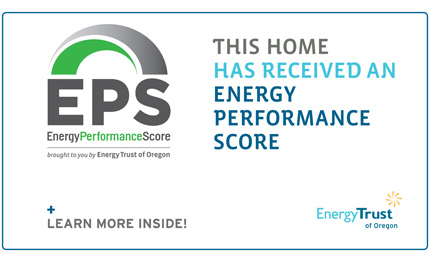
For homebuyers, it can be easy to get caught up in the bells and whistles when looking for a new home. However, beyond the outward appearance, there are a lot of factors that contribute to the value and performance of a newly built home, including energy efficiency. Energy Trust’s Smart Homebuyer Checklist helps homebuyers learn about a newly built home’s EPS, Energy Trust’s energy performance score.
Similar to a miles-per-gallon rating for a car, an EPS is a tool a homebuyer can use to evaluate homes of similar size based on their estimated annual energy consumption, monthly and annual energy costs, and environmental impact. It all adds up to an overall energy performance score. The lower the score, the better—a low EPS identifies a home as energy efficient with a smaller carbon footprint and lower energy costs. A home’s EPS can range from zero to more than 200—zero being the most efficient, more than 200 being the least.
The Smart Homebuyer Checklist can also prepare a homebuyer to talk with builders and real estate professionals about the many benefits of energy-efficient homes, and what features of a home contribute to its EPS. They will know what to ask, what to look for, and in the end, be able to compare homes based on energy consumption, estimated energy costs and environmental impact.
Read more about Energy Trust’s EPS and Smart Homebuyer Checklist >>
